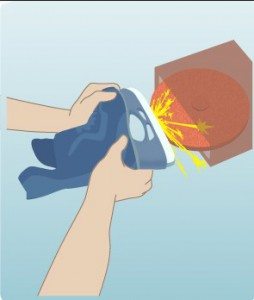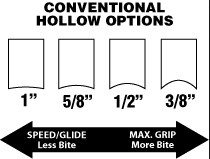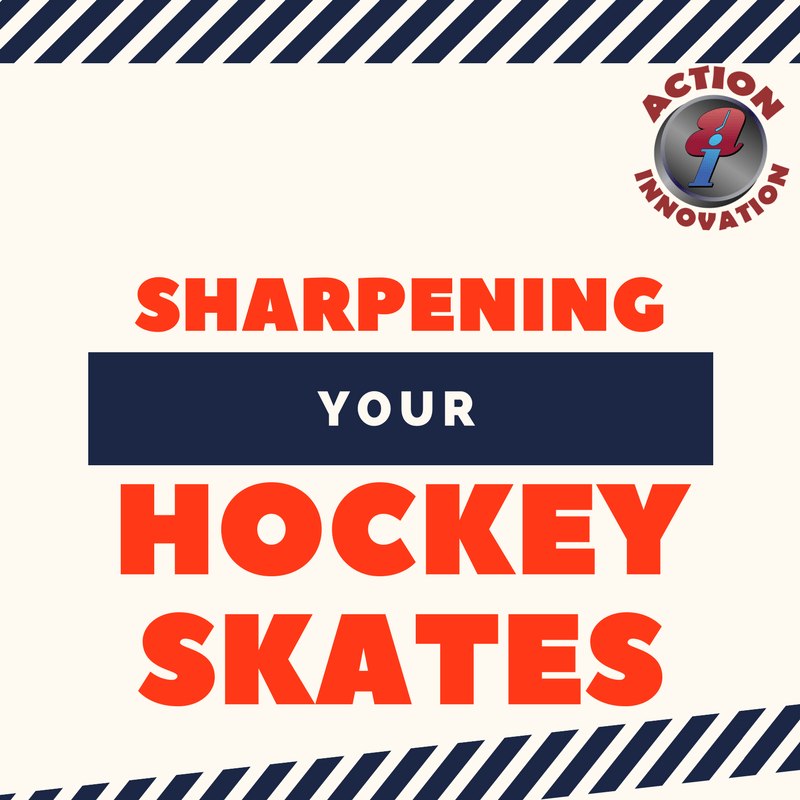
Skate maintenance begins with “sharpening” your skate blades. There are some skate sharpening standards you should understand. Let’s begin with the “hollow”. When you take your skates to get sharpened, the technician will secure the skate in a holder and pass the blade against a rapidly spinning grinding stone. Sparks will fly. Don’t be alarmed; this is supposed to happen.

Fig. 1
The grinding stone used will grind a hollow of specified radius. Figure 2 illustrates how a blade hollow radius is measured, and the conventional radius specifications.


Fig. 2
Players generally choose a preferred hollow based on the trade-off between maximum glide (improves linear speed) and maximum grip (improves quickness of turning/stopping).
The hollow is only part of the skate blade system. The edges are a critical part of creating the hollow. The integrity of edges and hollow are essential for hockey skill development. Figure 3 illustrates a poor sharpening, in which the hollow radius is not centered. Figure 4 illustrates damaged edges. This damage can happen through regular wear by making contact with concrete, metal (post), plastic (other players’ equipment) and other hard materials (sticks) or simply debris (on players’ bench, ice, etc.).

Fig. 3

Fig. 4
Regular use will result in wearing of the edges and require sharpening to reestablish the integrity of the edges/hollow. Sharp edges are required to allow the blades to function as designed.
The skate blade “profile” (also called “rocker” or “contouring”) refers to the curved shape of the blade from heal to toe. Figure 5 illustrates some standard measurements on the left and highlights the “glide surface” of the blade on the right. The glide surface is how much of the skate blade is touching the ice at one time while the skater is on the “flats”.

Fig. 5
Poorly profiled blades will have a detrimental impact on the skater’s performance. Figure 6 illustrates some different types of profiling. Elite skaters will have a personal preference, typically based on their skating style and how they play the game. Most skaters will not notice or care to notice the difference. For peak efficiency, skaters should know their preferred profile and ensure it is not altered via poor sharpening.

Fig. 6
Action Innovation teaches skaters to ensure their balance is maintained directly under the ball of their foot. When doing so, this is where the glide surface would be located (move x forward a little bit in fig. 5).




